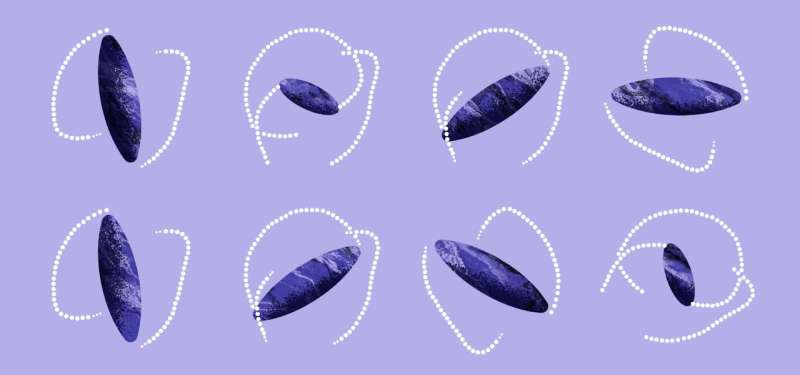New computer model designs a drug delivery strategy to fight cancer

Stanford researchers have created a computer simulation, validated by experimental results, to help design drug-delivery nanoparticles that carry cancer-fighting medicines directly to tumors, while minimizing the potential side-effects on healthy cells.
Bryan Smith, director of the Translational Nanomedicine laboratory in the Radiology and Molecular Imaging Program at Stanford, and Eric Shaqfeh, professor of chemical engineering and of mechanical engineering, describe their work in the Sept. 18 issue of Biophysical Journal.
The study builds on previous research, which showed that drugs embedded in nanoparticles are generally better able to evade biological barriers than free-roaming drug molecules. Yet even nanoparticles have thus far shown limited success in reaching their targets. The critical roadblock has been getting the drug from the bloodstream into the tumor. So, in their study, the researchers sought to identify the optimal shape for nanoparticles to act as a molecular carrier to get small-molecule drugs out of the blood vessels and into the interstitial fluids that bathe the tumor where the drugs can enter cancerous cells. Once inside, the nanoparticles dissolve, allowing the drug molecules to kill the tumor cells.
The nanoparticle delivery strategy exploits one of cancer's great weaknesses: the haphazard way in which tumors grow.
By combining Shaqfeh's insights into fluid dynamics with Smith's knowledge of nanoparticle flow and vascular biology, through simulations and experiments the researchers showed how nanoparticles of different shapes flow through blood vessels, tumble through these pores in the tumor blood vessels and reach malignant cells.
The researchers said that because cancers can be very different, the shapes and sizes of nanoparticle delivery systems may have to be tailored to the specific tumor. Unlike previous models, which oversimplified nanoparticle shapes, the researchers say their model is expected to help drug designers accurately predict the optimal particle shape and size in order to most effectively treat the tumor.
The Stanford team also validated their theoretical assumptions with real-world experiments. Combining simulations with experiments helped them reveal that long, thin, so-called one-dimensional particles typically traverse the pores best. The researchers also learned that the previously overlooked process of diffusion, through which particles move from areas of higher to lesser concentration, can play an unexpectedly large role in governing whether nanoparticles slip through pores.
In future research, Smith and Shaqfeh hope to explore how the polymers that make the nanoparticles more biocompatible control their delivery properties. They also plan to broaden their models to include electrical forces that might cause pores to attract or repel nanoparticles.
More information: Preyas N. Shah et al. Extravasation of Brownian Spheroidal Nanoparticles through Vascular Pores, Biophysical Journal (2018). DOI: 10.1016/j.bpj.2018.07.038
Journal information: Biophysical Journal
Provided by Stanford University



















